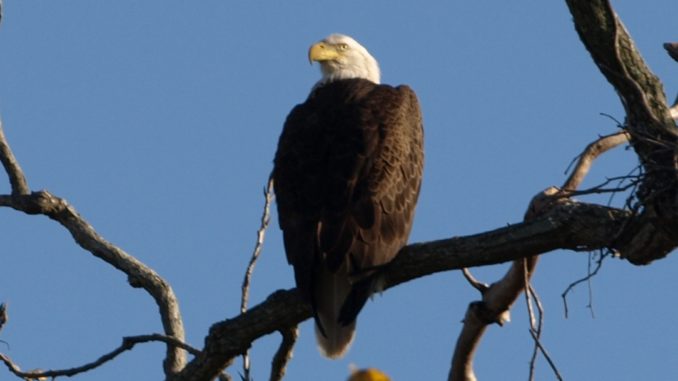
With bald eagles now becoming a common sight in St. Charles Parish a wildlife committee at Luling’s Monsanto plant is trying to attract the formerly extinct birds to the site.
Edward Hymel, a member of the committee, said that eagles are often spotted flying around the Monsanto site and have been seen hunting on some of the plant’s vacant land.
“One of our members attended the Wildlife Habitat Council’s annual symposium in November and attained the latest ideas of how to rebuild more inviting nest structures,” Hymel said. “We have about six members on our committee who are committed to the reconstruction project.”
Twelve years ago, members of Monsanto’s wildlife committee installed telephone poles with structures on top to entice eagles to begin nesting on site. Originally, the group planned to build a deep structure on top of the poles and let the eagles build their own nests. Now, they have decided to build a flatter structure and build the entire nest for the eagles to make it look like an older used nest.
“We currently have two poles, but we are going to focus on one at the present time until we are successful,” Hymel said. “Our predictions are that we could only support two nesting pairs on our site.”
In 1963, there were only 400 nesting pairs of the national bird in the United States. In the last flyover survey performed by the Louisiana Department of Wildlife and Fisheries in 2008, there were around 500 nesting pairs of bald eagles in Louisiana alone.
In 2007, bald eagles were removed from the endangered species list.
Amity Bass, the natural heritage manager of Wildlife and Fisheries, said the decline of the birds has been attributed to the widespread use of pesticide DDT, which was introduced after World War II and banned in 1972. The chemical caused female eagles to lay eggs with weak shells that cracked when the mother tried to incubate them.
Illegal hunting and the destruction of the eagles’ natural habitat also contributed to their near extinction.
“There were no laws to protect them from being poached by people who thought they would eat the animals that they wanted to eat too,” Bass said. “Getting laws in place to protect them really allowed the eagles to thrive.”
The Endangered Species Act was passed in 1973 to save threatened animals and plants. The bald eagle was one of the first species protected under the act, which prevented killing the eagles or taking their eggs.
The eagles have been sighted across the parish recently, mainly in the Luling area.
“People should expect to see more and more of them,” Bass said.




Be the first to comment